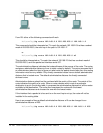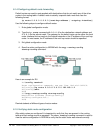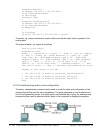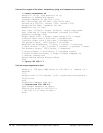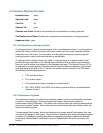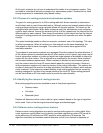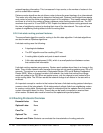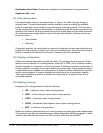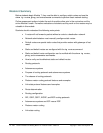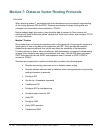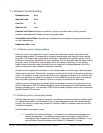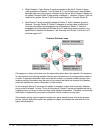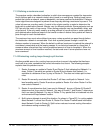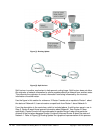
72 - 238 CCNA 2: Routers and Routing Basics v3.1 Instructor Guide – Module 6 Copyright © 2004, Cisco Systems, Inc.
Certification-Level Claim: Students can evaluate the characteristics of routing protocols.
Hands-on skills: none
6.3.1 Path determination
Path determination occurs at the network layer, or Layer 3, for traffic that goes through a
network cloud. The path determination function enables a router to evaluate the available
paths to a destination and to establish the preferred way to handle a packet. This information
can be configured by a network administrator or collected through the dynamic processes that
operate in the network. Routing protocols help prevent routing loops and use fewer resources.
An administrator can configure static routes for all reachable networks. Routers perform two
primary functions:
• Path selection
• Switching
During path selection, the routing table is examined to determine the next hop destination of a
packet and which interface to use to reach that next hop destination. Switching occurs when a
packet is moved to the interface and a frame is created to send the information.
6.3.2 Routing configuration
Global and interface parameters must be set when an IP routing protocol is selected. Global
tasks include the selection of a routing protocol, either RIP or IGRP, and IP network numbers
must be indicated. It is important to check the interface IP address and subnet configuration. A
common problem is to assign the wrong IP address or subnet mask. The network command
is required because it enables the routing process to determine which interfaces will send and
receive routing updates. A network statement must be entered for all connected networks.
Two common problems are failure to enable the routing protocol or failure to enter all the
connected networks.
6.3.3 Routing protocols
Examples of IP routing protocols include the following:
• RIP – a distance-vector interior routing protocol
• IGRP – a Cisco distance-vector interior routing protocol
• OSPF – a link-state interior routing protocol
• EIGRP – a balanced hybrid distance-vector interior routing protocol
• BGP – an exterior routing protocol
Make sure students understand that each routing protocol has advantages and disadvantages.
The protocols have different characteristics and were designed for different purposes. In some
instances administrators will want to use RIP and other times they will use BGP.



